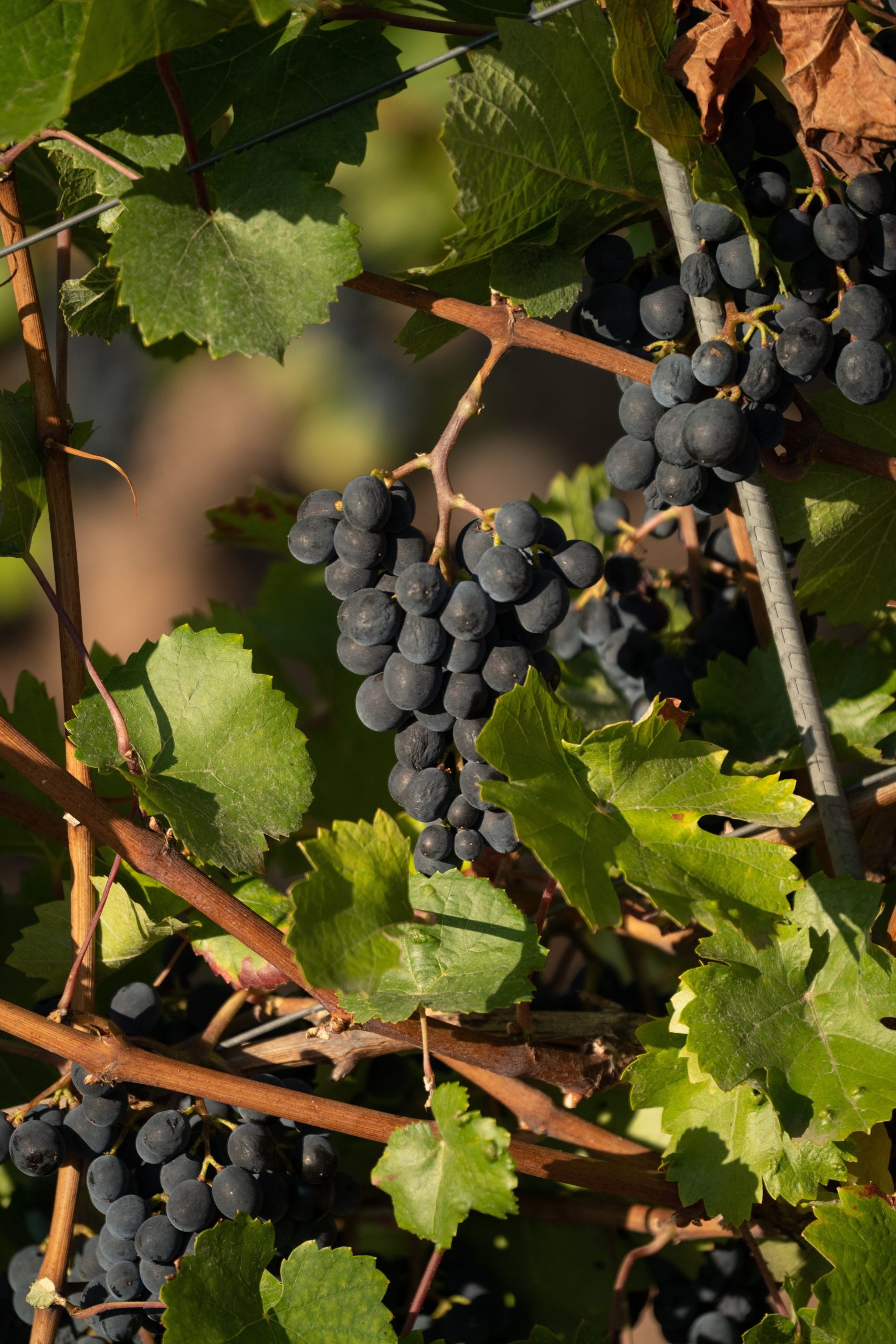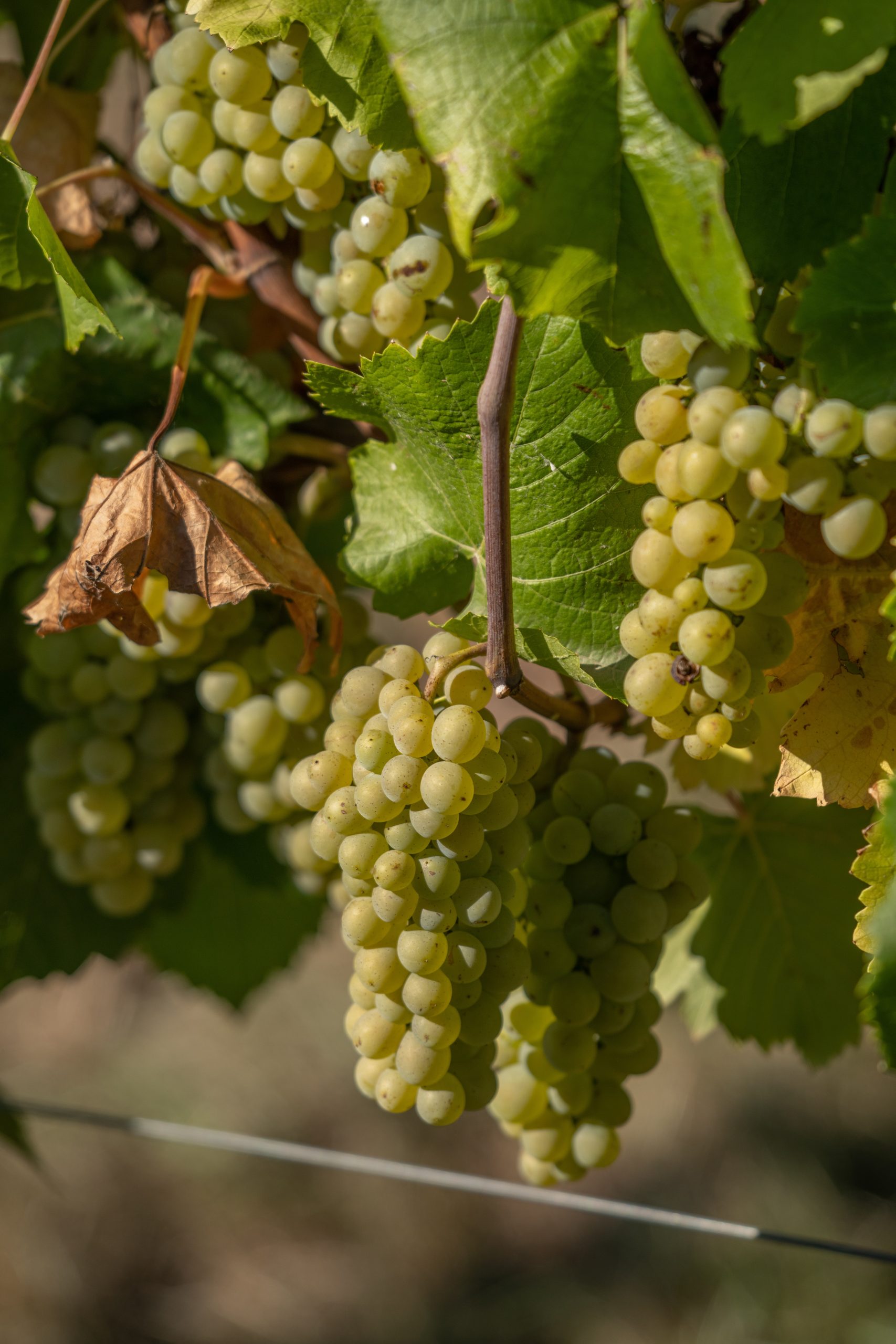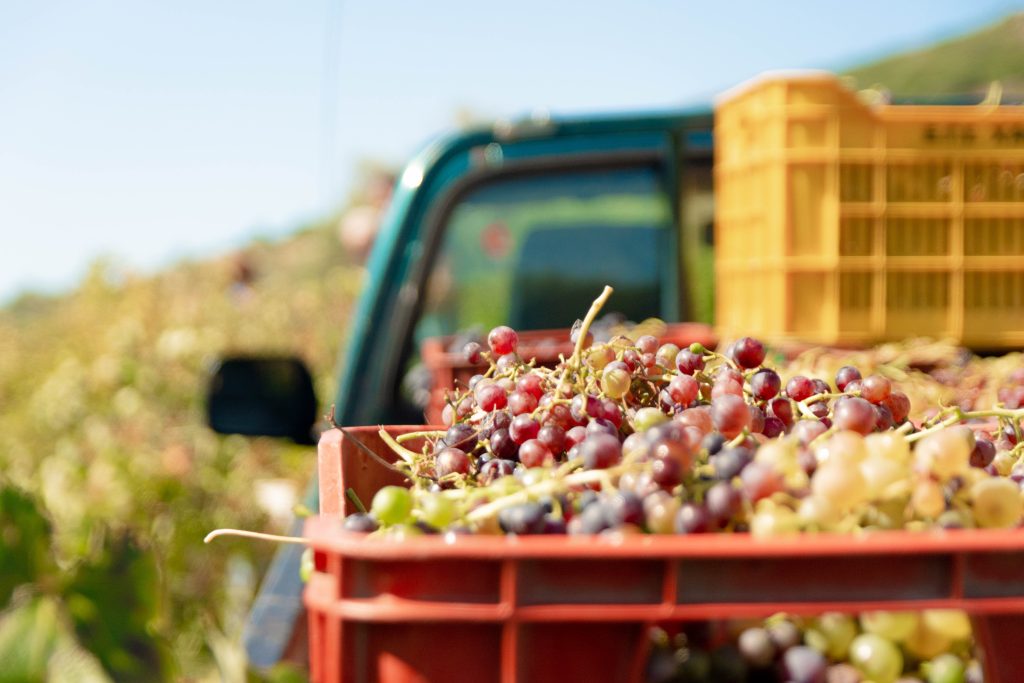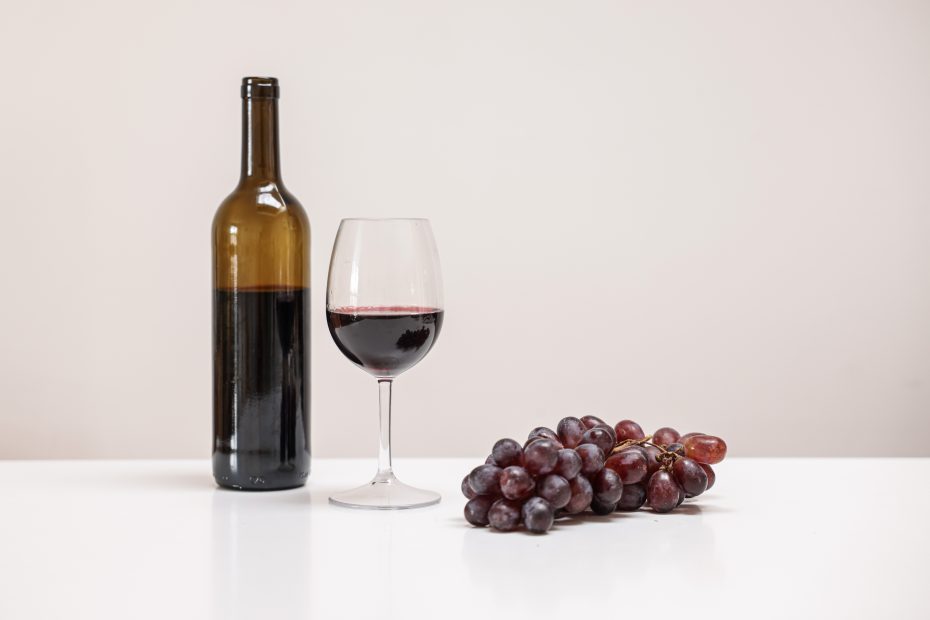Partly yes, namely “red wine from blue grapes”.
Partly no: white wine can also be made from blue grapes.
And what about rosé?
Look, if it were that simple, we wouldn't have been studying the subject for all these years!
Making white wine is, in principle, quite simple: pressing grapes, collecting juice and letting it ferment. What remains after pressing, the pulp, can possibly please us as Marc or Grappa or other, depending on the country where the wine is made. A strong drink distilled from the pulp.
I know this doesn't do the winemaker's work justice, but the bottom line is that the juice evolves into regular white wine. Yes, there are exceptions to this, but we are talking about colour here and with white wine it comes solely from the pale juice in the grapes. We will open a book about “orange” wine some other time…
And now you have to pay attention: have you ever seen a yellow and a blue grape up close? The inside, i.e. the flesh, is identical in both fruits. The juice is also exactly the same for yellow and blue grapes: yellowish and transparent.
So you can press those blue grapes, collect the juice and let it ferment and make white wine! Fact!
In the Champagne region, the place where wine marketing has become an art, they even have a name for it: blanc de noir. White wine from, let's say, “dark” grapes.
First things first: you have probably also noticed that white wine is often less intense, complex or pronounced?
Hold that thought.


Because now we're going to see how we get to red wine.
The smart ones have already figured it out: if the colour of the skin is the only thing that differs between yellow and blue grapes, then the colour must come from there.
And that's right! The pulp is allowed to ferment with the juice to extract not only colour, but also taste and character. And depending on the intended wine and the grapes used, and a truckload of other considerations, "maceration" is applied for a certain time: the professional word for the contact between must (juice) and pulp, in order to give red wine a certain taste, structure, mouthfeel, aftertaste, perception of tannins…
Want to impress the company? When tasting, say: “Nice wine, but the maceration could have been shorter. The wine would have been a little more accessible…” Always true, even if the wine is already very accessible.
And so you immediately know why red wine is on average more expensive than white wine… It is simply more complex and labour-intensive. Apart from the fact that the wine needs more time to come into balance due to the necessary manipulations.
And rosé, I can hear you think.
The shortest way would of course be mixing white and red wine, but that is actually not allowed. European legislation, but actually also an interesting route if you were to split the same blue grapes and process part of them as white wine and the other part as red wine. To bring them together afterwards in an optimal proportion… Rosé wine from one grape, perfectly manageable, offers many possibilities…
No, the "correct" way is to let the pulp ferment for a shorter time so the wine does not turn red but rosé and the consequences are less pronounced, such as taste, structure, mouthfeel, aftertaste, perception of tannins...
In both cases, red or rosé, the duration of that maceration determines the result. Often the intensity is increased by pushing down the floating pulp to intensify the contact. Usually this is done manually by the winemaker, pushing the pulp down from above, but larger wine companies manage this automatically.
Important: if the pulp also remains in the must during the alcoholic fermentation, the effect is further increased because this fermentation ensures that the mass heats up, so that the absorption of colour, aromas, taste ... goes faster.
You might assume that someone once, accidentally or consciously, left the pulp in the must and over time noticed an anomaly, even enrichment. On the other hand, we can assume that the concept of “fermentation” was discovered by accident by fermenting grapes, we will come back to that, and that some kind of maceration took place right away. So it would make sense that the humble white wine, as a concept, was not created until later… Surprising twist.

The grape also plays an important role. There are different types of blue grapes: small ones with a thick skin, such as the Barbera from Piedmont, and larger ones with a thin skin, such as the Pinot Noir that we know from Central France. And everything in between. This will make a substantial difference due to the ratio of mass and supplier of the additional substances. The Barbera will give a more pronounced result, while the Pinot will be softer and will also be lighter in colour intensity.
Fortunately, there are lovers of soft, somewhat lighter Central French Pinot Noir and also firm, Northern Italian Barbera.
We appreciate both styles. Or what did you think…
de wijnproever

